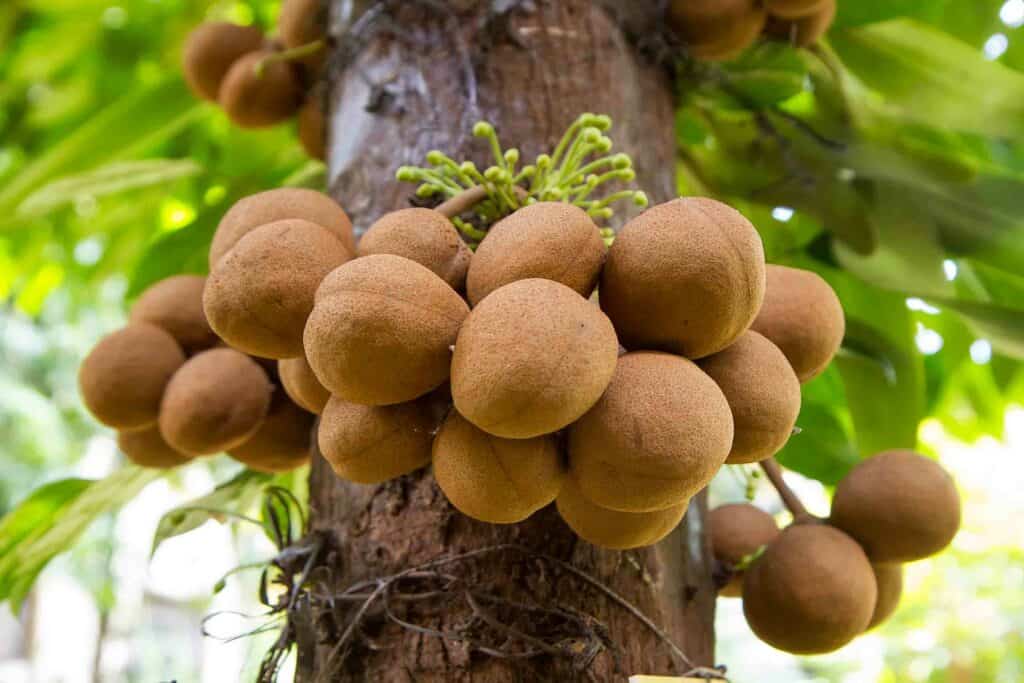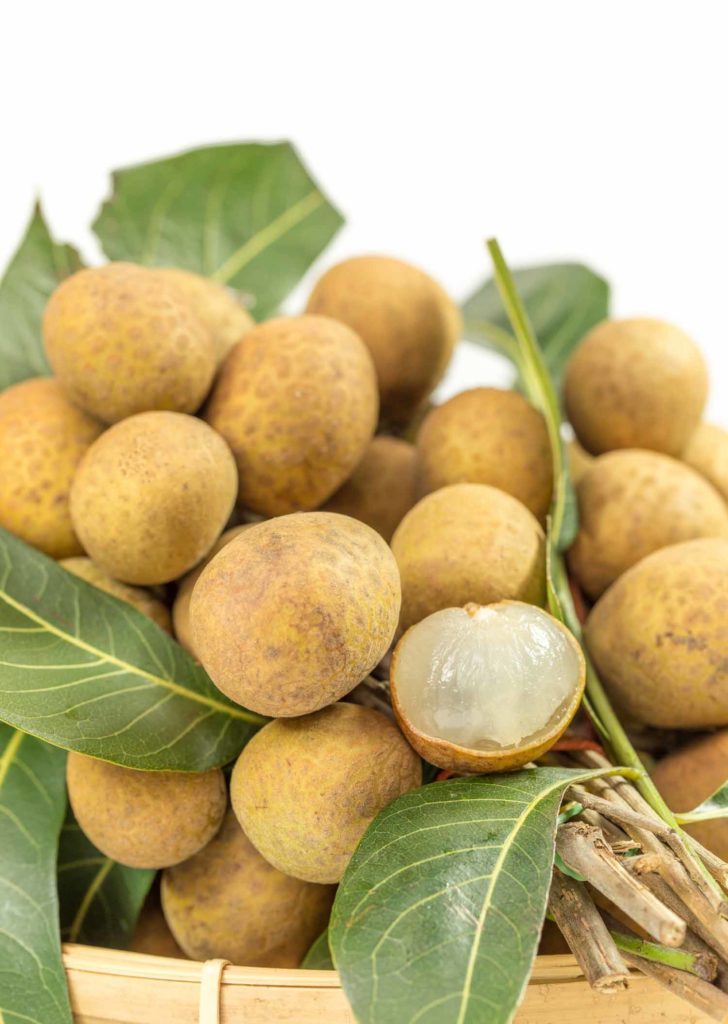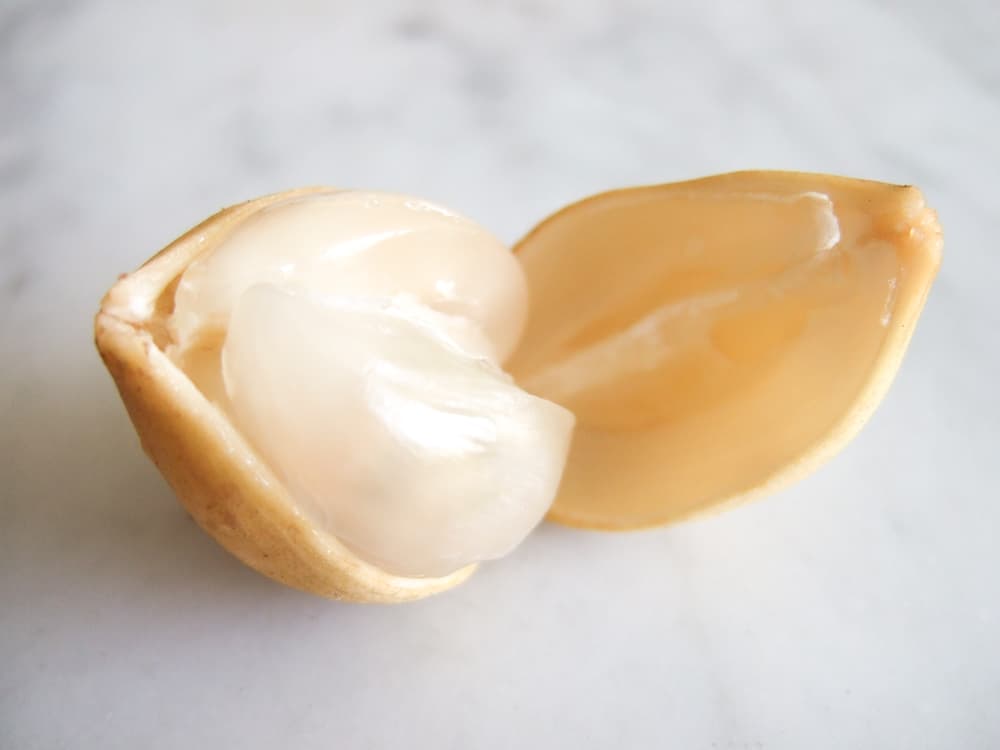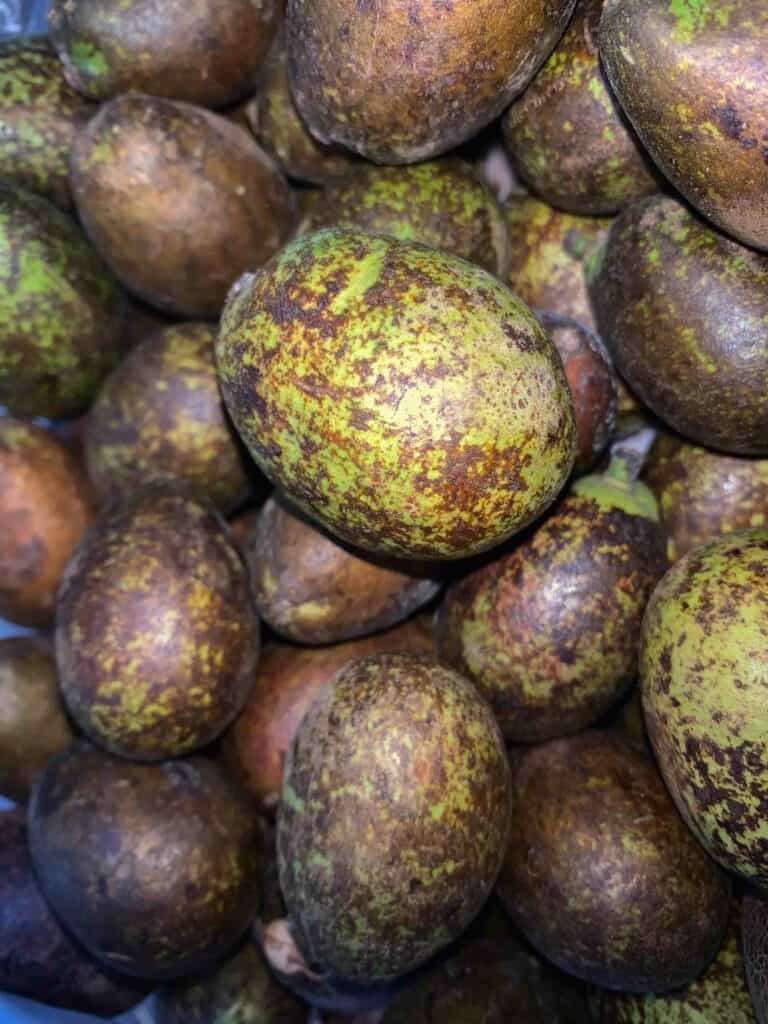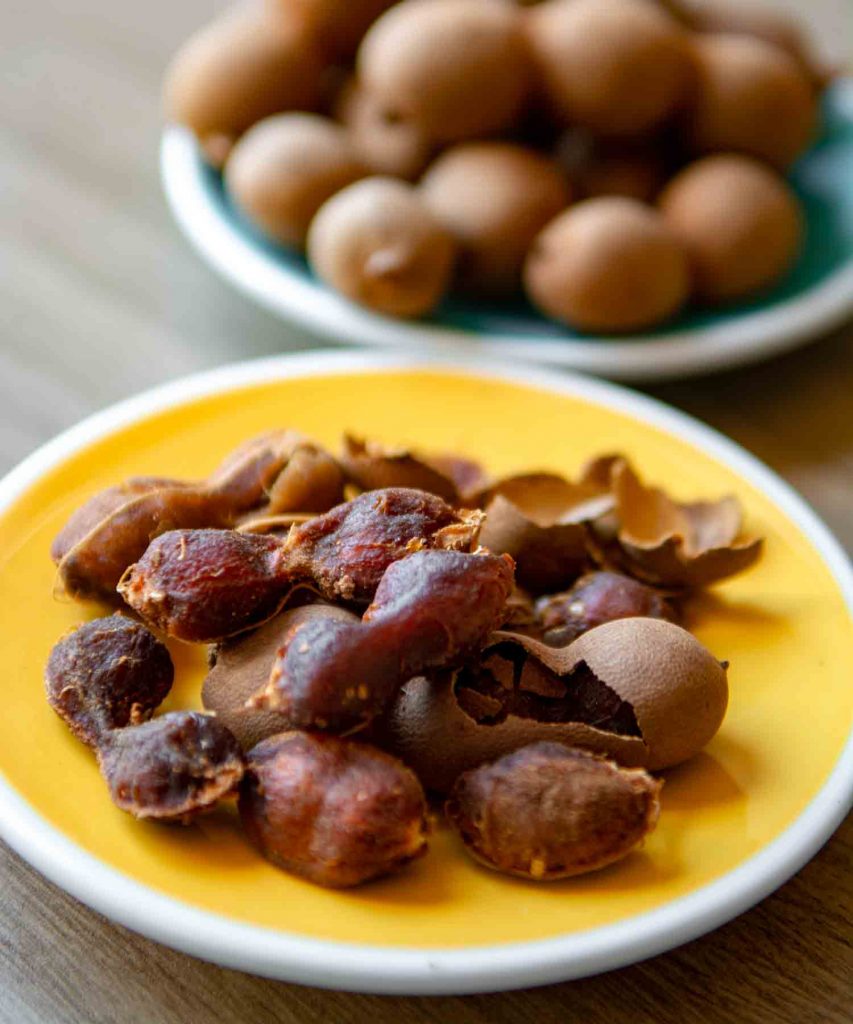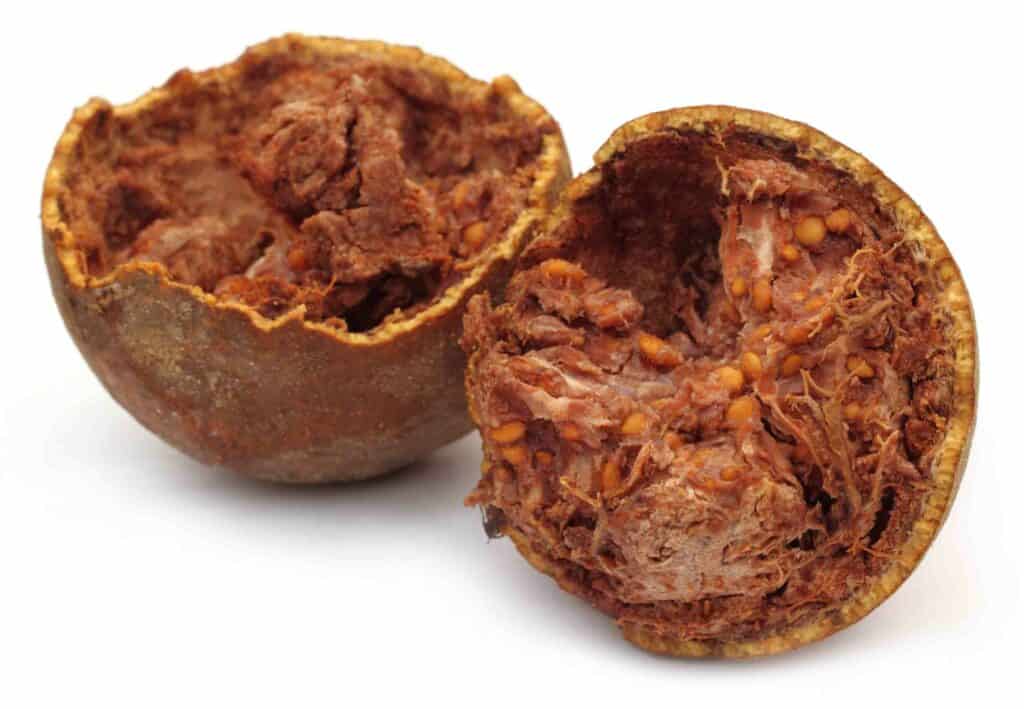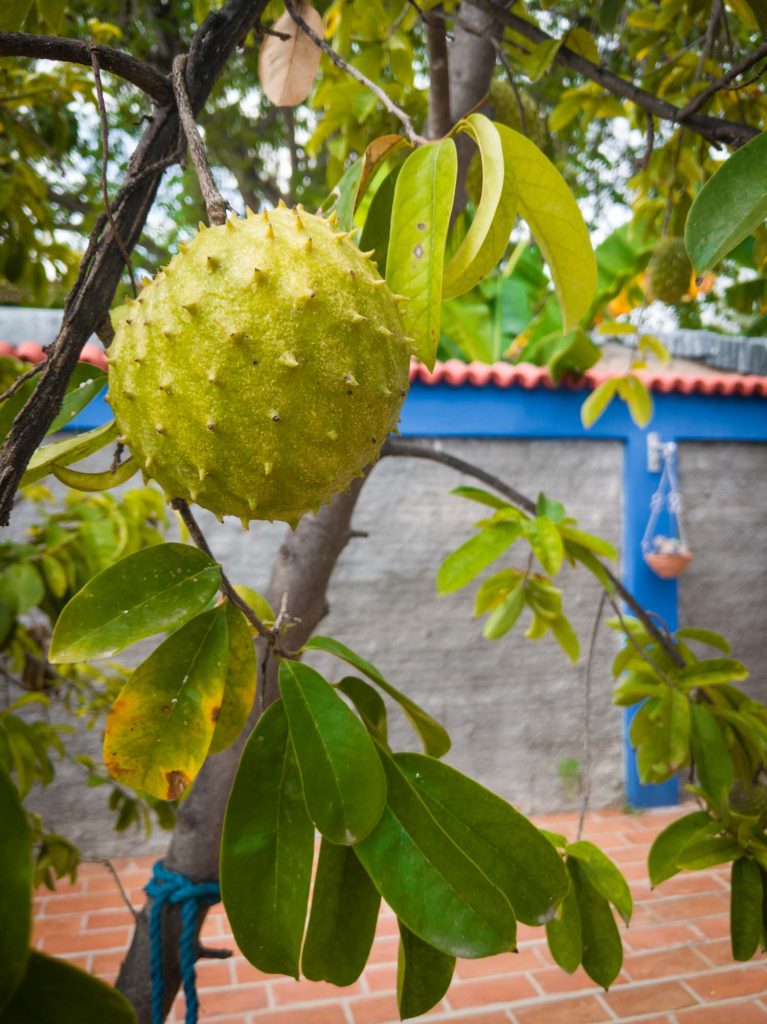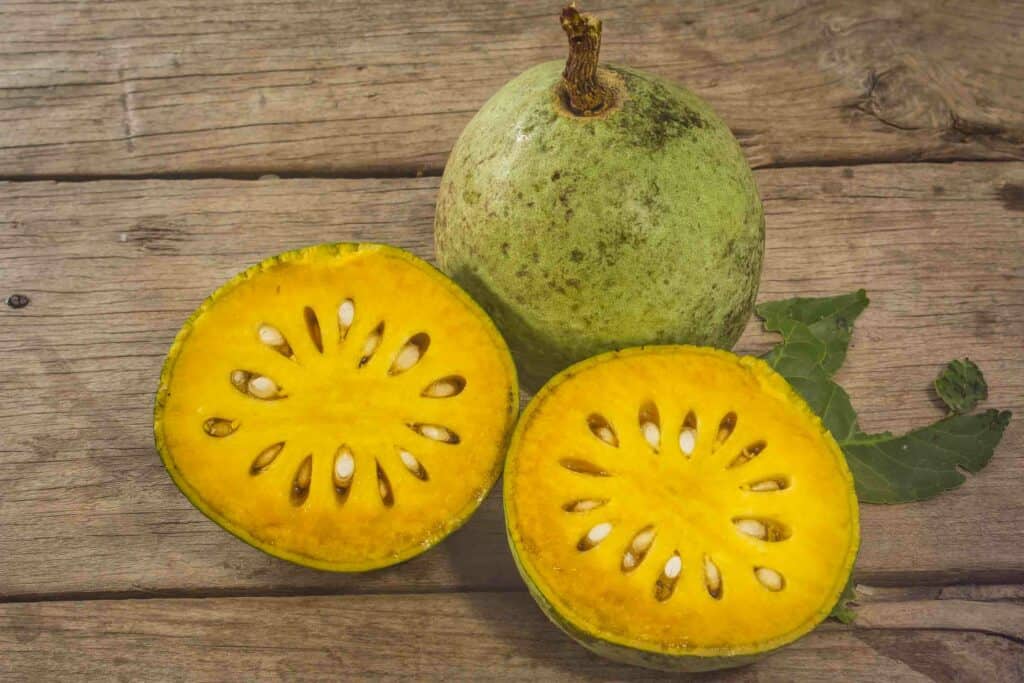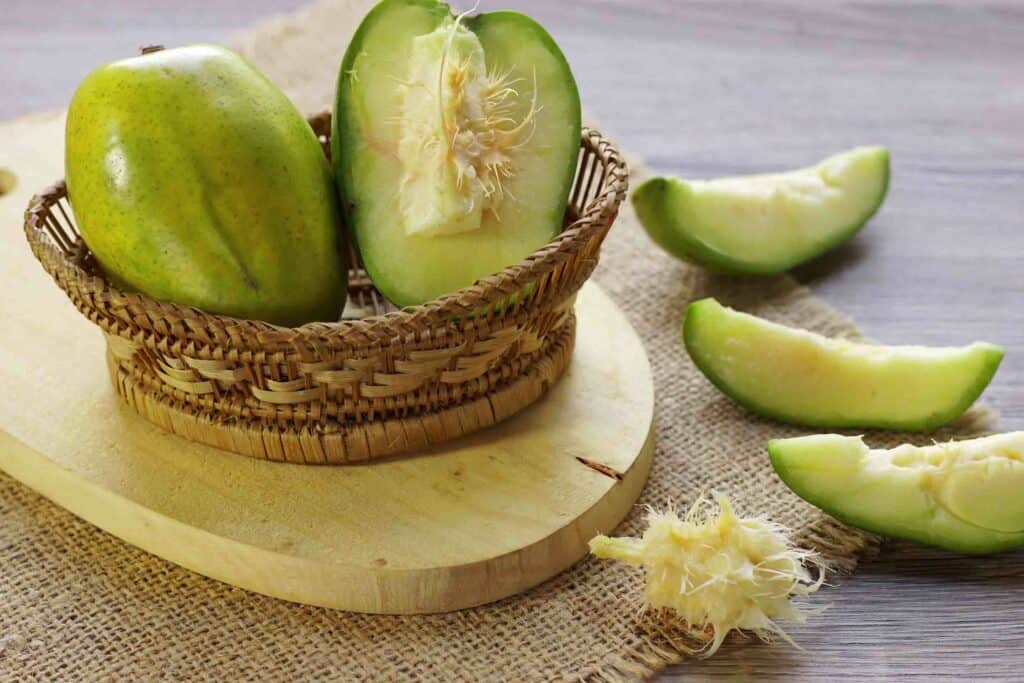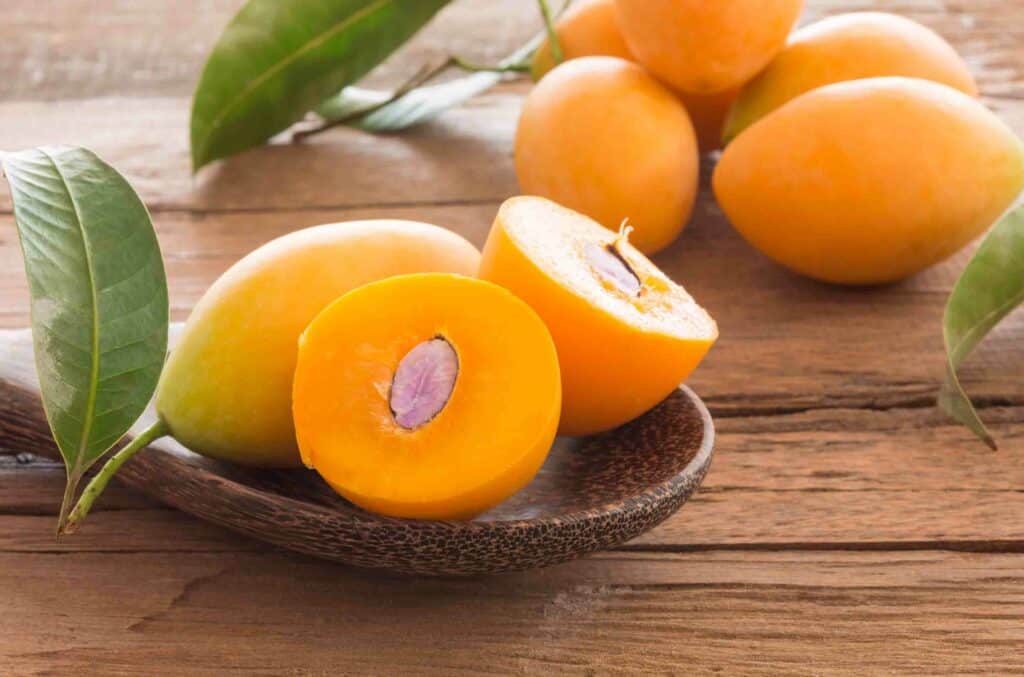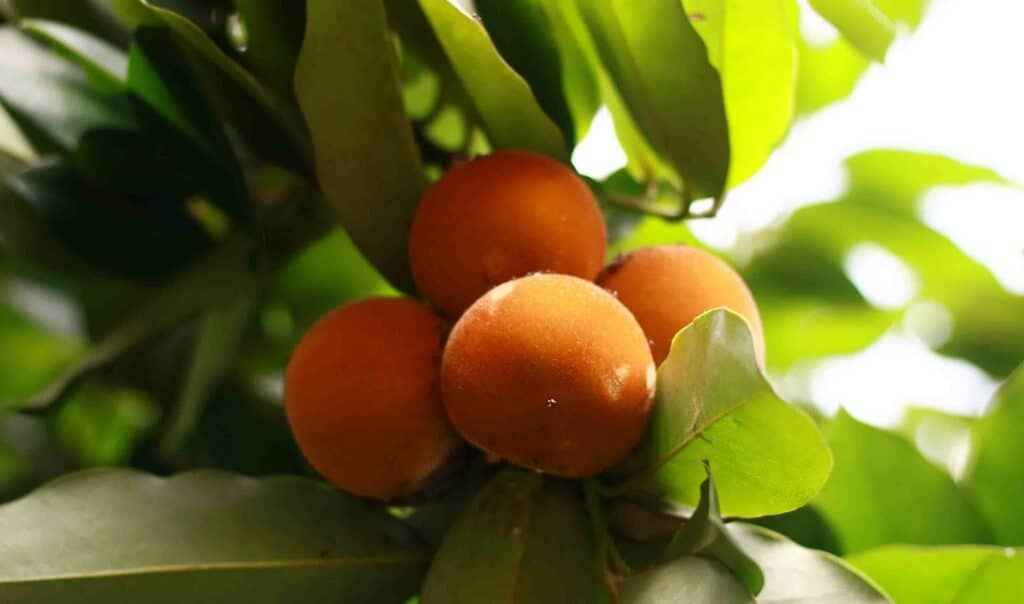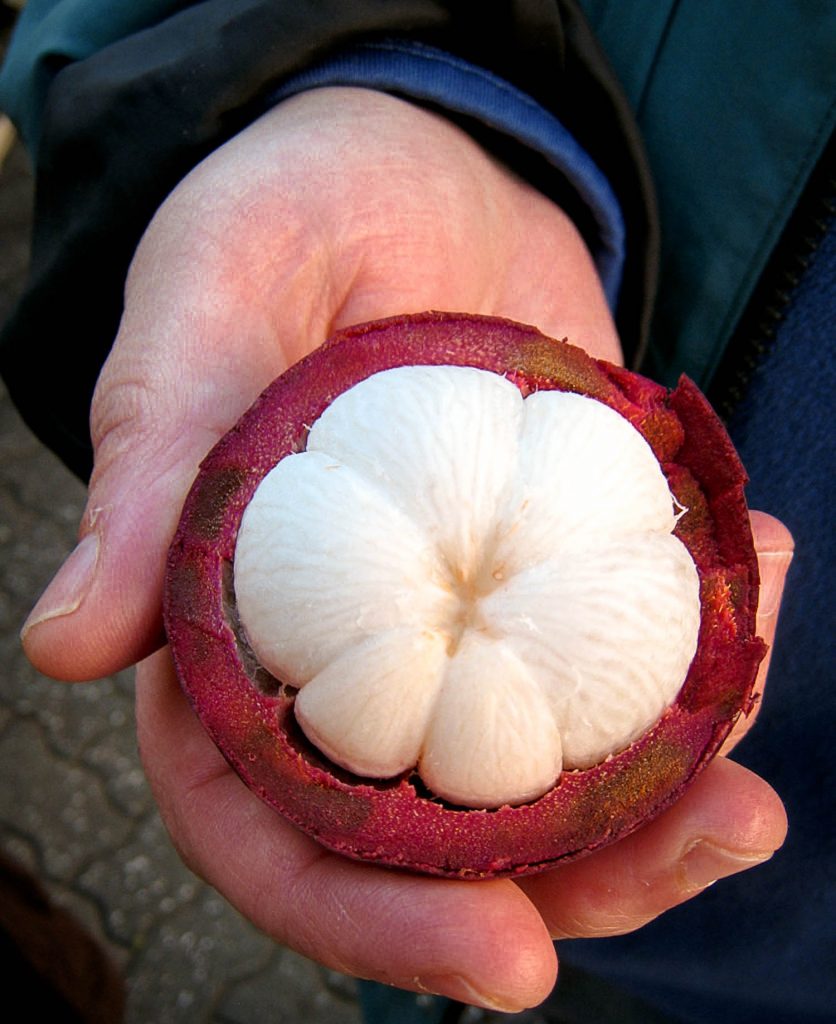The ultimate bucket list, you’ve likely never tried most of these Indonesian fruits.
Indonesia has a beautifully tropical climate thanks to its proximity to the equator.
Not only does this mean that it’s the perfect winter escape for many, but the climate facilitates the growth of many delicious tropical fruits.
Some of the fruits in Indonesia are completely unique and many westerners have never even heard of them.
While fruit is a huge aspect of the Indonesian diet and is consumed by all on a daily basis, international demand for tropical fruit from the country has increased drastically.
Indonesia has the goal of being the largest supplier of tropical fruit in Southeast Asia by 2025 and the largest global supplier by 2045.
Although this sounds like a mammoth task, the ideal growing conditions make it highly likely.
And while most tourists are familiar with fruits in Bali, there are so many across this vast country.
FRUITS IN INDONESIA
1. Durian – Indonesia’s National Fruit
Durian – the fruit that smells so bad, but tastes so good. The ominous, spiky durian is one of the most famous fruits in Indonesia and the Sumatran variety is the only one available on the international market.
Durian is described as being one of the most foul-smelling fruits in the world and is even banned in some apartment blocks and on public transport.
There are two distinct seasons – the Sumatran variety is harvested between June and September, while the common variety between October and February.
The foul odor aside, durian is actually highly nutritious and delicious, having an interesting flavor profile of diced garlic and caramel in whipped cream.
Indonesian Vegetarian Food
The unique taste can be quite off-putting at first, but once tasted, it’s never wasted. Durian is normally eaten raw/fresh and features in many famous Indonesian desserts.
It can also be cooked and mashed or pureed to incorporate into dishes.
There are also many health benefits of durian including the management of fever, blood pressure, and liver disease.
The fruit, bark, leaves, and roots are all used in the production of traditional medicines for the treatment of these ailments.
2. Kepel / Stelechocarpus Burahol
Kepel, also known elsewhere as burahol, is one of the less common Indonesian fruits, with few remaining trees left in the country found mostly on Java.
They are slow growing and take around 8 – 10 years to start producing fruit.
Kepel is not a very common fruit found at local markets and you will be lucky if you do find it even though the season is year-round.
The flavor profile has undertones of coconut, mango, and papaya, while the fruit itself is highly aromatic.
Overall, it boasts a sweet, tropical, and fruity flavor and best eaten raw/fresh.
Kepel is also a good source of both vitamin A and C and has other health benefits such as serving as a natural diuretic to cleanse the kidneys.
They are also used as an anti-aging ingredient, with a broad range of uses in this front.
3. Lengkeng / Dimocarpus Longan
Lengkeng is directly translated from Cantonese meaning “the dragon’s eye” – a somewhat threatening name for such a small, delicious fruit.
You might know it better as longan.
Lengkeng belongs to the soapberry family that includes lychee and rambutan (which you will learn about later on), with the season being from September to April.
Lengkeng is not only an Indonesian fruit, it can be found all throughout Southeast Asia and one of the most popular Vietnam fruit. They are found in small bunches and have a light brown, bark-like outer shell.
Once opened, they have a white flesh similar to lychee, but are slightly less aromatic and best eaten fresh.
There is also a small pit in the middle, so care should be taken when biting into them – no one likes to lose a tooth on their travels.
4. Dukuh / Lansium Parasiticum
Dukuh are a native fruit to Southeast Asia – the tree itself belongs to the Mahogany family.
In English it is known as langsat, lanzones, or longkong in English. In Indonesia it’s also known as duku or dokong fruit in Malaysia.
The small potato-like fruit is found in clusters similar to bunches of grapes, with a few being found together.
The season is year-round, although the peak season occurs between fall and winter.
Dukuh have a slight furry outer skin and upon peeling them, have garlic-like segments inside, best suited for raw applications.
These fleshy segments have a subtle sweet and sour taste to them, and also contain a flat seed inside.
The flavor profile of these Indonesian fruits is compared to a combination of grape and grapefruit and are highly flavorful.
5. Matoa / Pometia Pinnata
Matoa is one of the Indonesian fruits that resembles mangosteen and lychee in appearance, but longan and rambutan in flavor.
It’s part of the lychee family and known as pometia pinnat. The oval-shaped fruit has a tough skin that ranges in appearance from green and yellow to light brown and red.
The best use of matoa is for fresh applications, eaten raw or used in fruit-based beverages like smoothies.
The fruit is high in Vitamin C and E, which have great antioxidant properties that promote healthy skin.
Matoa has quite a specific season that runs from November until March and coincides with the monsoon season in the country.
They are known to be Indonesian fruit specifically from Papua.
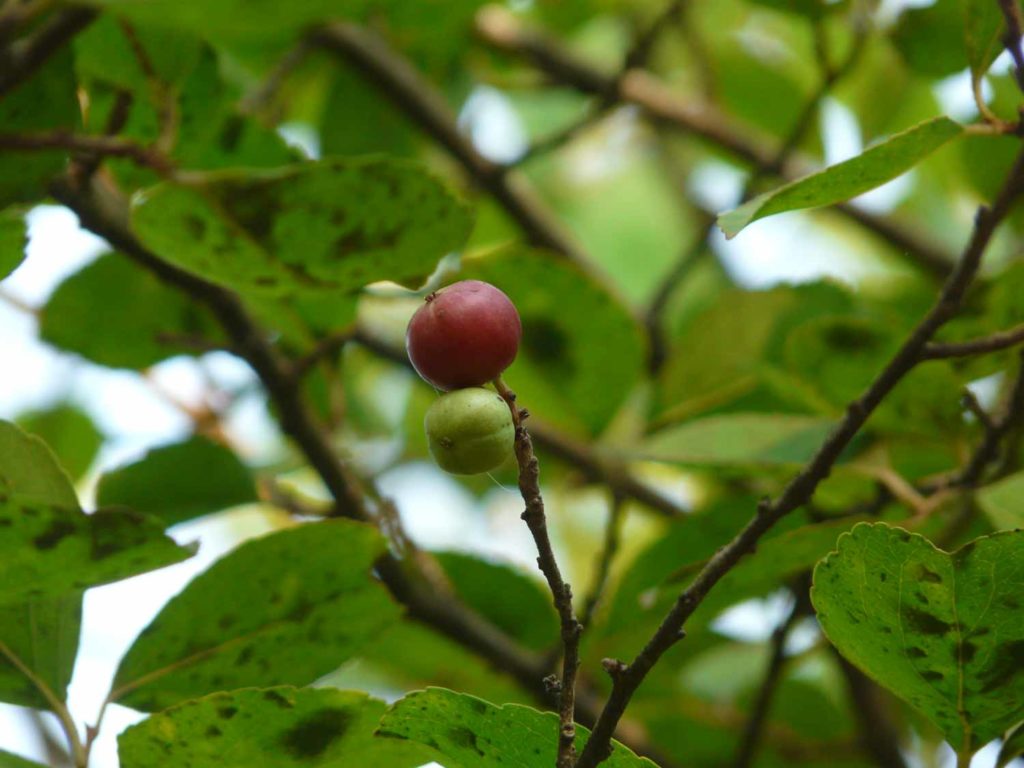
6. Rukam / Flacourtia Rukam
Rukam is found in small clusters and has a smooth, red/yellow appearance. Mature rukam are characterized by a soft flesh and a slightly sweet, acidic, and sour taste.
Unripe rukam on the other hand, are harder, astringent, and crunchy similar to that of an apple.
Rukam has a broad range of applications and can be eaten fresh, used for jams, compotes, and jellies, or dried and pickled.
Rukam are in season during summertime in Indonesia, available between the months of May and August.
Aside from being rich in Vitamin A, calcium, potassium, and iron, rukam are also high in fiber which facilitates digestion and helps with removing toxins from the body.
They are also a popular fruit in Trinidad known as governor’s plum and known as Indian plum in other countries.
7. Asam Java / Tamarindus Indica
Asam Java or tamarind as it’s commonly known, is one of the most used Indonesian fruits.
The trees are also some of the most widely distributed in the tropics of the Asian continent and the fruit is in season from early spring until late fall.
The light brown, cinnamon-colored pods are generally used for culinary purposes once they mature, and the seeds become hard, flat, and glossy in appearance.
Teh Talua
Asam Java is a highly versatile ingredient that is used in cooking, for both sweet and savory dishes. It can be used in soups, carbonated drinks, sweet fruit chutneys, and juices.
The date-like insides from the pod are often ground to produce tamarind paste that is added to savory dishes when cooking and the acidity is also great for tenderizing meat.
Asam Java also has many health benefits including the treatment of constipation, liver and gallbladder problems, and stomach disorders.
Tamarind is common throughout Latin America and one of the best fruits in Panama.
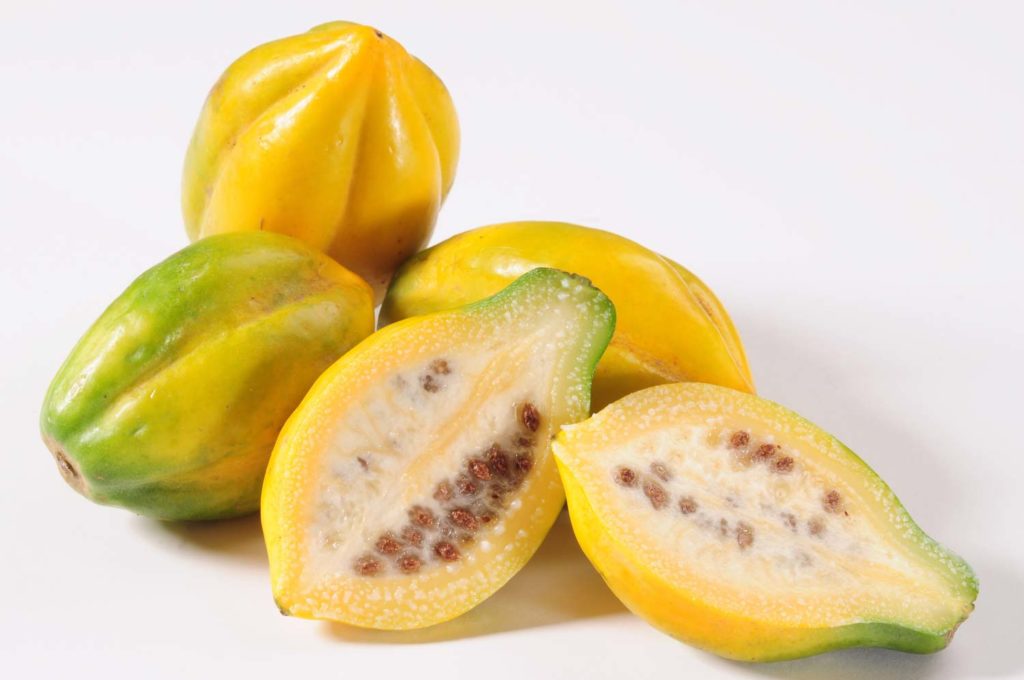
8. Carica / Carica Pubescens
You can find a number of different papaya in Indonesia. These Indonesian fruits are different colours and shapes.
Carica, or mountain papaya, derive their name from the altitude at which they grow – generally around 1500m – 3000m above sea level up in the mountains.
The fresh fruit has a similar flavor to regular papaya and resembles it in appearance too.
The fruit grows along the trunk of the tree in a spiral formation and there can be in the region of 60 mature fruits per tree.
The season ranges from summer until wintertime, when they are either eaten fresh or processed into syrup, juice, candied fruit, and jam.
Papaya is originally from the American tropics but now grows all over the world and very common fruits in Ecuador, especially at breakfast.
9. Kawista / Limonia Acidissima
Kawista is one of the more unique Indonesian fruits, having a bark-like outer core and a sticky, fibrous flesh on the inside.
The ripeness of the fruit is difficult to determine and is done so by dropping it from a foot high. If it bounces, it’s not ripe.
The flavor profile is interesting, with a sharp, acidic characteristic that is both sweet, sour, and buttery. It is often compared to the likes of tamarind.
The kawista season coincides with the monsoon season, running from November until March. Once the hard outer core is cracked open, the flesh can be scooped out and eaten as is.
Alternatively, it is used in tarts called nastars or in a confectionery item called dodol.
Kawista is a source of iron, vitamin C, and calcium and is also valued for its antibacterial and anti-inflammatory abilities.
It’s also known as wood apple, elephant apple or kod bel in India. It looks similar to the bael fruit but is different.
10. Sirsak / Annona Muricata
Known as soursop in English, sirsak almost looks like the baby brother of durian.
The appearance and the flavor couldn’t be more different. While they look quite scary on the outside, the fruit is deliciously sweet and tropical, with a flavor profile resembling pineapple, banana, strawberry, and coconut.
This Indonesian fruit is available throughout the year, with the peak season running from winter until late fall.
Sirsak is a versatile fruit, and it can be eaten raw on its own, or mixed with other fruits to form a salad mix.
It can also be processed into pulps, purees, and juices ideal for things such as beverages, ice creams, sorbets, jellies, and syrups.
As an added bonus, it mixes well with alcohol to produce perfect, refreshing cocktails.It has also been used to treat medical conditions such as heart disease, liver conditions, arthritis, and asthma.
It’s also. a popular Cuban fruit but there it is called guanabana.
11. Maja / Aegle Marmelos
Maja, also known as Indian bael, Bengal quince, bilva fruit or stone apple, is one of the Indonesian fruits that is found year-round, with the peak season in the fall.
Inside the hard outer shell is an aromatic and juicy flesh that tastes similar to passion fruit. The ripe fruit can either be scooped out and eaten as is or it can be juiced.
It is believed the fruit is good for the heart and brain and can be used for both anti-inflammatory and antimicrobial purposes.
12. Kedondong / Spondias Dulcis
Kedondong is one of the fruits in Indonesia that is available throughout the year.
When fully ripened, kedondong are yellow on the outside, with the wet, crisp, and acidic inner flesh tasting similar to pineapple.
It is best eaten fresh out of one’s hand, but can also be eaten with fish sauce in Indonesia.
The ripe fruit can also be juiced, while the unripe fruit can be preserved and turned into pickles, relishes, or jellies.
Kedondong is rich in vitamin C and a single fruit can provide you with enough for your entire daily requirement.
It is also known as ambarella, June plum and Spanish plum.
Indonesian Food
13. Sawo Kecik /Manilkara Kauki
Sawo kecik trees are normally planted for uses other than their fruit, such as for a shade tree or as ornamental trees near temples.
Their trunks and branches are used to produce wood carvings. The small, reddish-brown fruit is either eaten fresh or turned into a syrup.
It is also believed that the young, unripe fruit is good for improving one’s appetite.
Around the world these Indonesian fruits are usually called caqui, although in Australia it is called wongi or wongi plums.
14. Gandaria / Bouea Macrophylla
Gandaria are one of the Indonesian fruits that have a mixed flavor profile of sweet and tart. There are a few different varieties, but they are normally juicy, tender, and acidic.
The internal aroma of pine/turpentine is released when gandaria are sliced open. One of the unique traits of gandaria is their seed in the center – it ranges from pink to purple in color.
Although it is also edible, it is extremely bitter and can be a bit unpleasant.
The season varies throughout Indonesia depending on the location, but the peak season is normally in the late spring right the way through until summertime.
Gandaria are also an excellent source of vitamin C, fiber, and beta-carotene, as well as small amounts of calcium, iron, and phosphorous.
They are also known as a marian plum, maprang, plum mango and mayongchid.
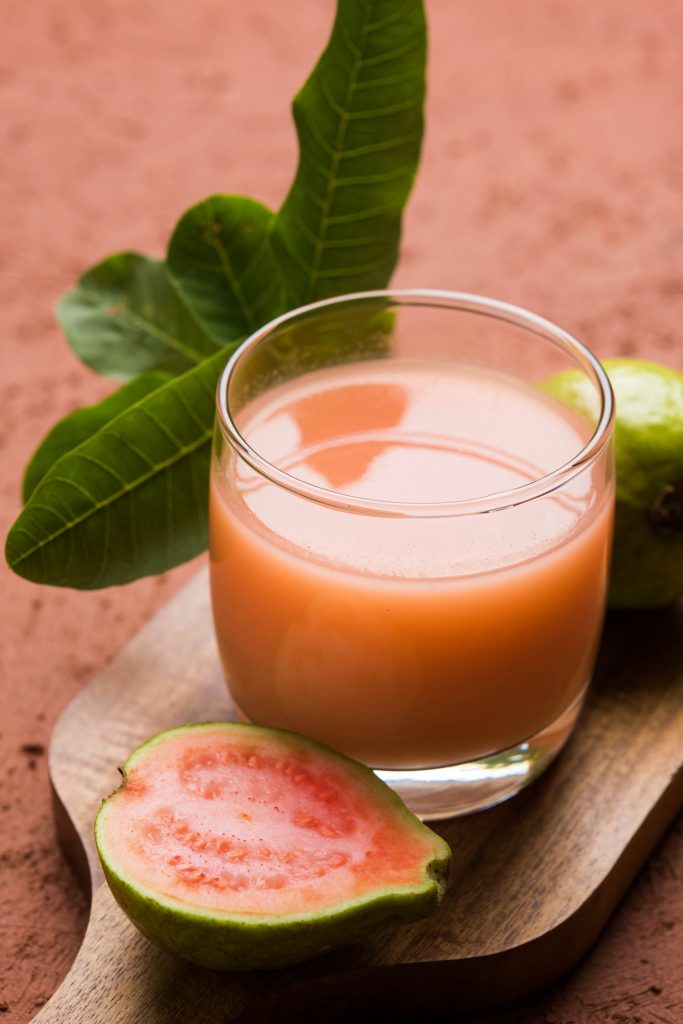
15. Jambu Biji / Psidium Guajava
Jambu biji is not only one of the most common fruits in Indonesia, but also worldwide.
Commonly known as guava, they are found throughout the country from the beginning of spring through winter.
They are fleshy with a consistency of a combination of banana and apple with a beautiful tropical aroma that follows through onto the palate.
This flavor is a combination of pineapple, papaya, lemon, and banana.
They are normally eaten fresh, but have so many different applications from poaching, savory tarts, preserves and jams because of their high pectin content.
Served hot or cold – the list is never-ending. Jambu biji are high in vitamin C, helping to boost the immune system.
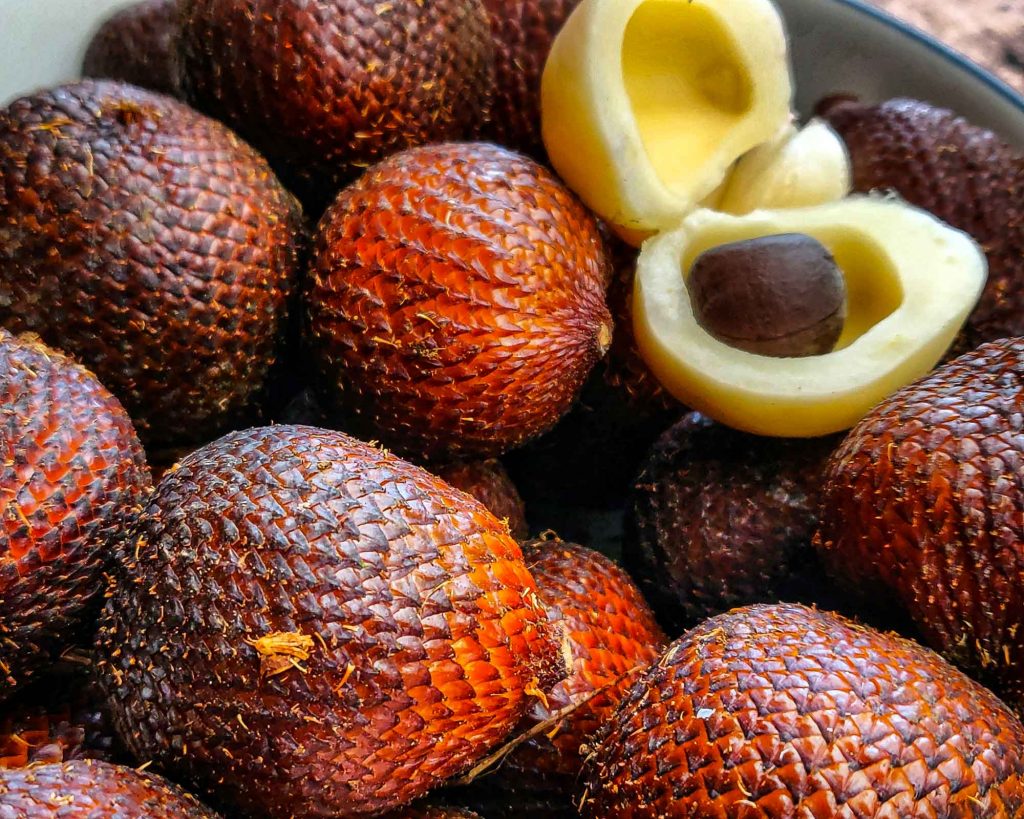
16. Salak / Salacca Zalacca
Salak or snake fruit is a form of soft, juicy fleshed Indonesian fruits that taste of pineapple, peach, and pear.
Two or three fleshy lobes are found beneath a hard, scaly, snake-like outer shell.
They are found in clusters that grow at the base of the Rrakum palm and are available throughout the year in Indonesia. They are most commonly found in Bali, Lombok, Maluku, Sulawesi and Timor.
The Indonesian fruit contains high levels of potassium, thiamine, iron, calcium, and vitamin C, as well as pectin.
Pectin and potassium promote brain health and development as they are important nutrients.
You can also find them in the Amazon but are not one of the common South America fruits.
Indonesian Drinks
17. Mundu / Garcinia Dulcis
Mundu trees are native to parts of Java and are quite rare.
The fruit is about the size of an apple, either eaten fresh or the sour, juicy pulp is turned into jam.
This Indonesian fruit contains high levels of vitamin C and a common medicine for the boosting of the immune system.
Although quite a rare fruit to find, they are sometimes found at local markets on East Java.
It’s also known as Indian tamarind in India and Sri Lanka as well as baniti, egg tree, goruka and rata fruit.
They are also often called yellow mangosteen.
18. Bisbul / Diospyros Blancoi
Bisbul, a relative of the persimmon and looks like a fuzzy persimmon. It also has quite a pungent aroma like that of durian.
It is also called velvet apple, velvet persimmon and butter fruit. In Java it’s more often known as sembolo.
The flesh, however, is whitish, slightly dry, and sweet, and can be eaten fresh or used in drinks and salads.
Bisbul thrives in monsoon climates and the season is normally from June until September.
It is also one of the most interesting Filipino fruits and called mabolo, kamagong or tabang . The fruits in Thailand are called marit.
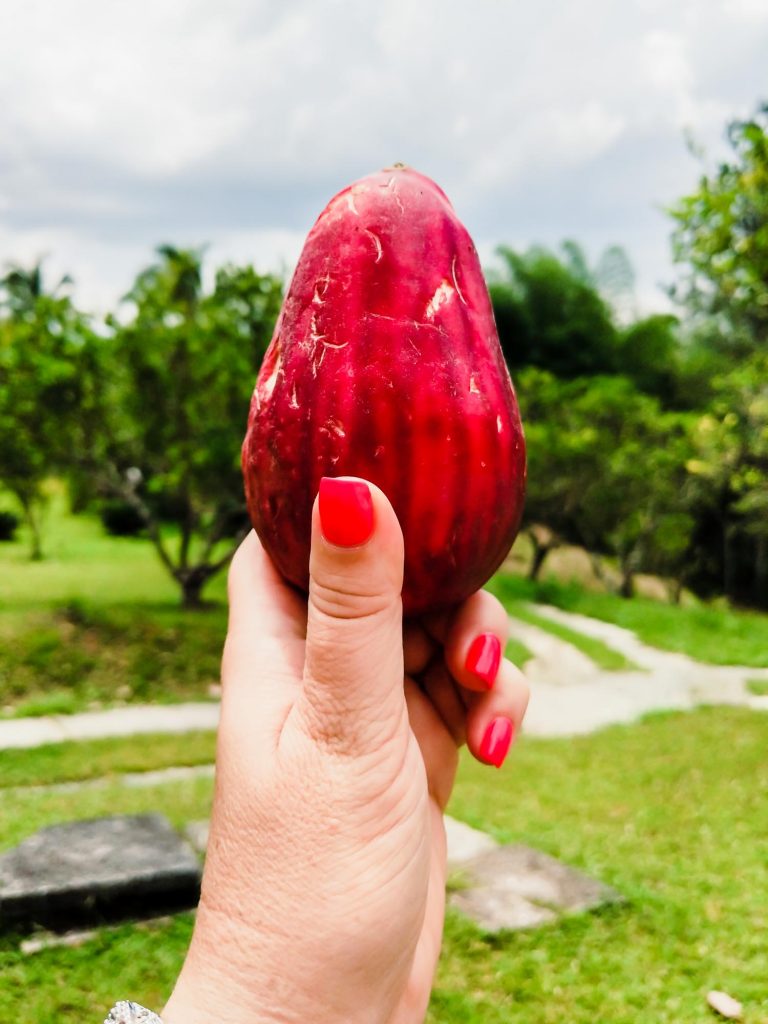
19. Jambu Air / Syzygium Aqueum
Also known as rose apple, these small, round, and bell-like fruits in Indonesia have a mild, sweet, snow pear-like flavor that are usually available from spring through to fall and into winter.
Jambu air has a few health benefits too – they have high levels of vitamin A and C, calcium, iron, and potassium.
They can be eaten raw or cooked by boiling or stewing them and can also be sliced fresh in salads.
Rose apple are one of the most popular Jamaican fruits.
20. Mangosteen / Garcinia Mangostana
Mangosteen is an Indonesian fruit that is available from early summer right the way through to early winter.
Their sweet, tropical, and slightly tart flavor resembles other fruits such as lychee, pineapple, strawberry, and peach with undertones of caramel and butter.
They are mostly eaten fresh or juiced but the best use by far is for raw applications.
Mangosteens contain many vitamins, minerals, and fiber, helping with blood sugar control, weight loss, and promoting healthy skin.
It’s a popular South East Asian fruit and common Laos fruit. Across the ocean you’ll also find mangosteen as one of the most exotic Colombian fruits.
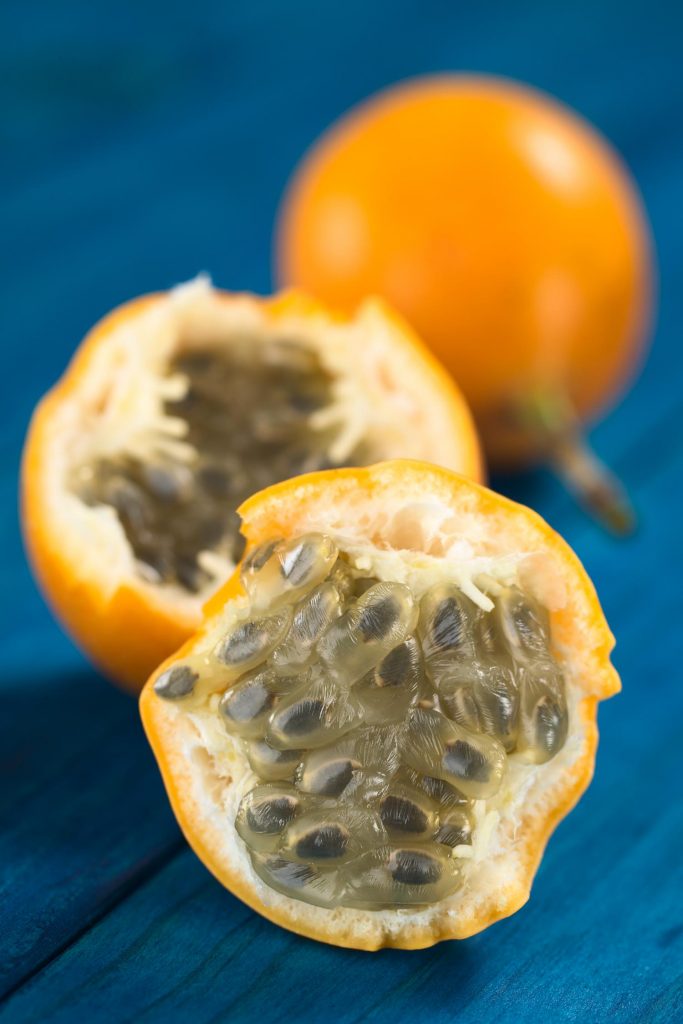
21. Markisa / Passiflora Edulis
Markisa are a variety of passion fruit found in Indonesia, displaying similar aroma and taste to that of the purple type that we know.
They have a sweet and tart flavor that is coupled with a beautifully tropical and floral aroma. Markisa are available all year round with the peak season in spring through to summer.
Markisa contains high levels of vitamin A and C as well as some potassium, ion, and phosphorus.
The fresh pulp can be eaten fresh, scooped out from flesh and is often used in baked applications for passion fruit tarts, coulis, and curds.
They are also a popular Argentina fruit known as maracuya and found throughout Latin America.
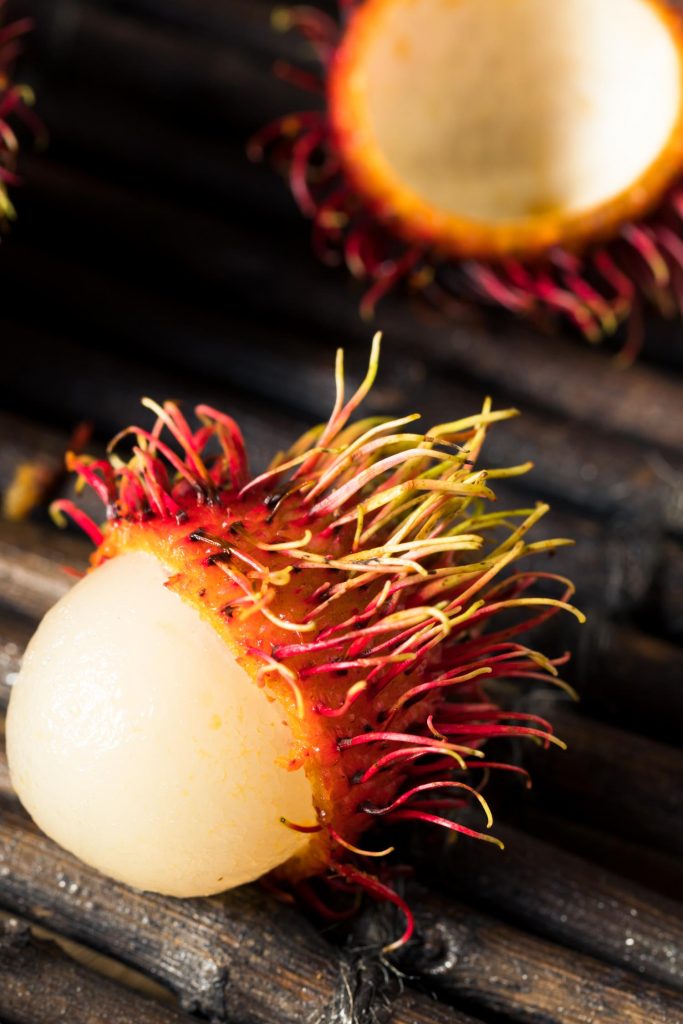
22. Rambutan / Nephelium Lappaceum
Rambutan are generally found in Indonesia in the fall and winter, when the local markets are stocked up on the red, spiny fruit.
The slightly intimidating look of the rambutan is quickly passed as inside, the lychee-like fleshy fruit greets you with sweet aromas.
They are sweet and slightly acidic with subtle notes of strawberry and grape.
The Indonesian fruit contains copper which helps to promote healthy bones and nerves, vitamin C, and fiber.
The best way to eat them is straight out of your hand, peeling back the outer layer and biting around the pip in the middle.
Rambutan can also be used in the making of cocktails, sliced into fruit salads, or mixed into soups and curries for a slight sweetness.
You’ll also find rambutan throughout Central America and are one of my favorite fruits in Nicaragua. It’s also one of the most popular fruits in Cambodia and Laos fruits.
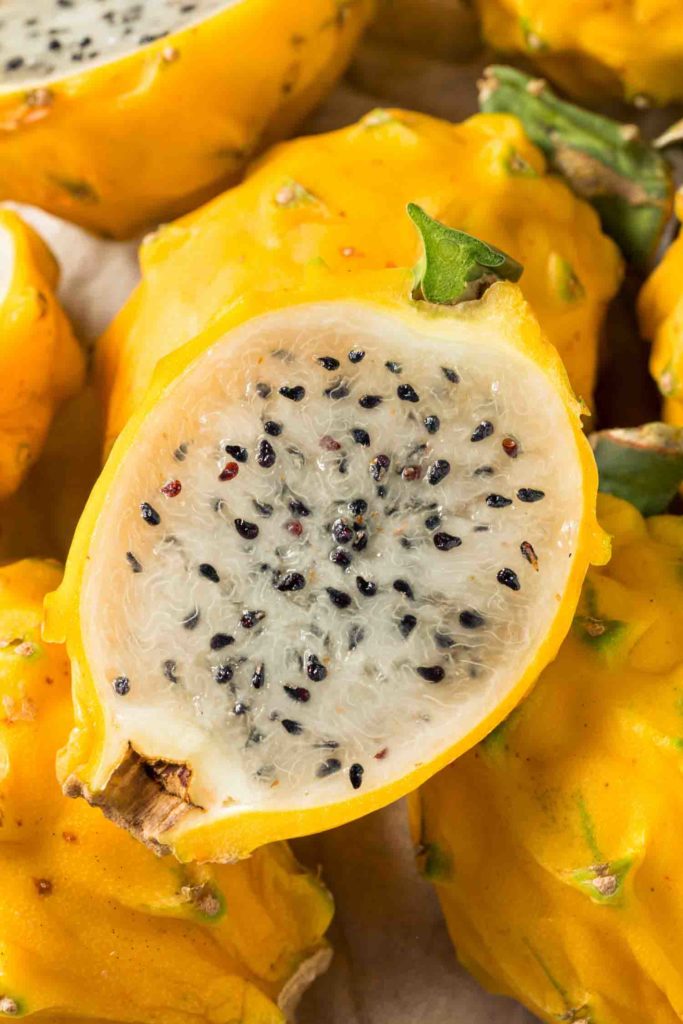
23. Naga / Selenicereus Costaricensis
Dragon fruit is one of the most famous Indonesian fruits and can be found almost everywhere. Although the pink dragon fruit is the most common you can also find yellow.
From local markets and street vendors to high-end restaurants, the juicy, spongy, and dense delight is always a hit.
It has flavors of berry, kiwi, pear, and watermelon and is best eaten raw and slightly chilled.
It is often blended into smoothies or served in fruit or savory salads.
Healthwise, dragon fruit is made up of around 80% water. So it is great for hydration, but also contains high levels of phytonutrients and antioxidants, carotene, and vitamin C.
Dragonfruit is also a common Guatemalan fruit.
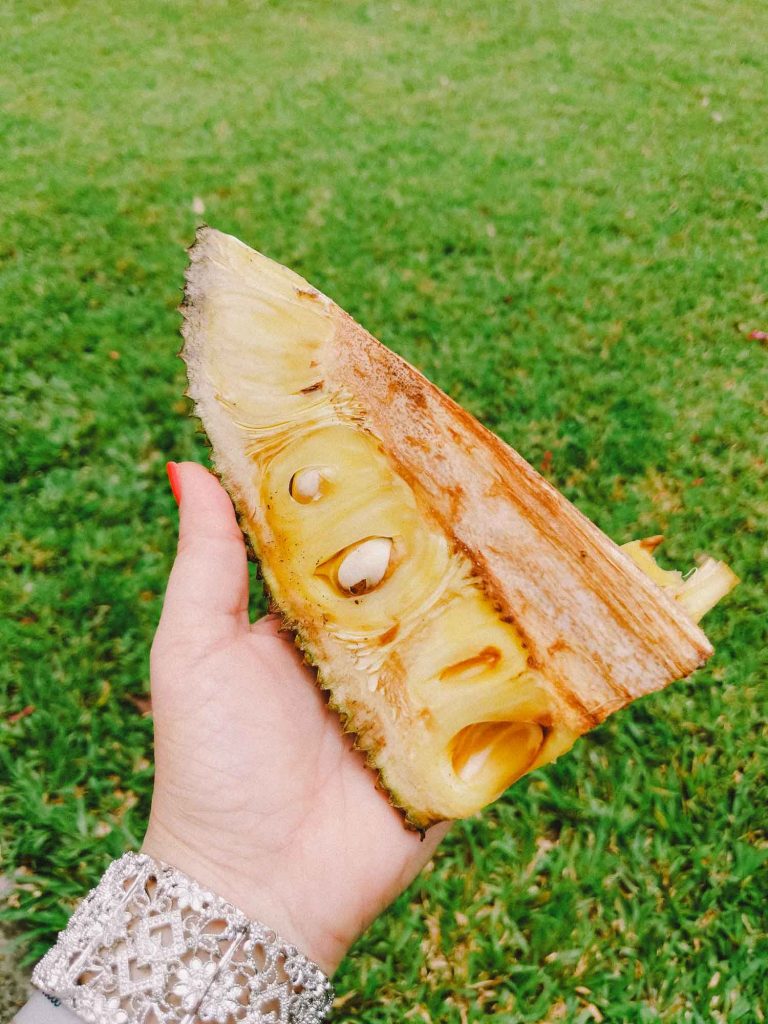
24. Nangka / Artocarpus Heterophyllus
Nangka, or jackfruit as it is known, is also one of the most famous fruits in Indonesia, found almost everywhere in the country.
Inside the green outer core made up of many small, cone-like protrusions you will find many yellow bulbs – the edible part of the jackfruit.
The flesh of these bulbs has a sweet, custard-like taste and is a combination of banana, pineapple, and bubblegum.
Although they are quite smelly, they contain many nutrients such as fiber, protein, vitamin B, potassium, iron, and calcium.
Beta-carotene also means that jackfruit has amazing antioxidant properties.
There are also so many uses for the Indonesian fruit such as eating it raw, cooking it to make a vegan “pulled-pork” substitute. It’s a common Padang food used in curry called gulai cubadak.
The seeds can even be roasted and eaten or dried and ground into a flour.
This is also one of the most common Costa Rica fruit.
25. Buah Buni / Antidesma Bunius L
Buah boni or buni fruit is the final item on this list of top fruits in Indonesia – a berry-like fruit with a similar taste to cranberries.
It’s known as bignay in Australia. I had it first in Lombok where staff at a restaurant had pulled it off a tree and offered it to me. It was like a grape and cranberry – fresh but tart.
They are available all year round, eaten fresh or used to make jams and preserves because of their tart, acidic flavor.
Wines and liquors are also made from buah boni, and they are used a lot in Indonesian cooking to make a sauce for fish dishes.
They have been used in Indonesia to treat anemia and heart disorders.
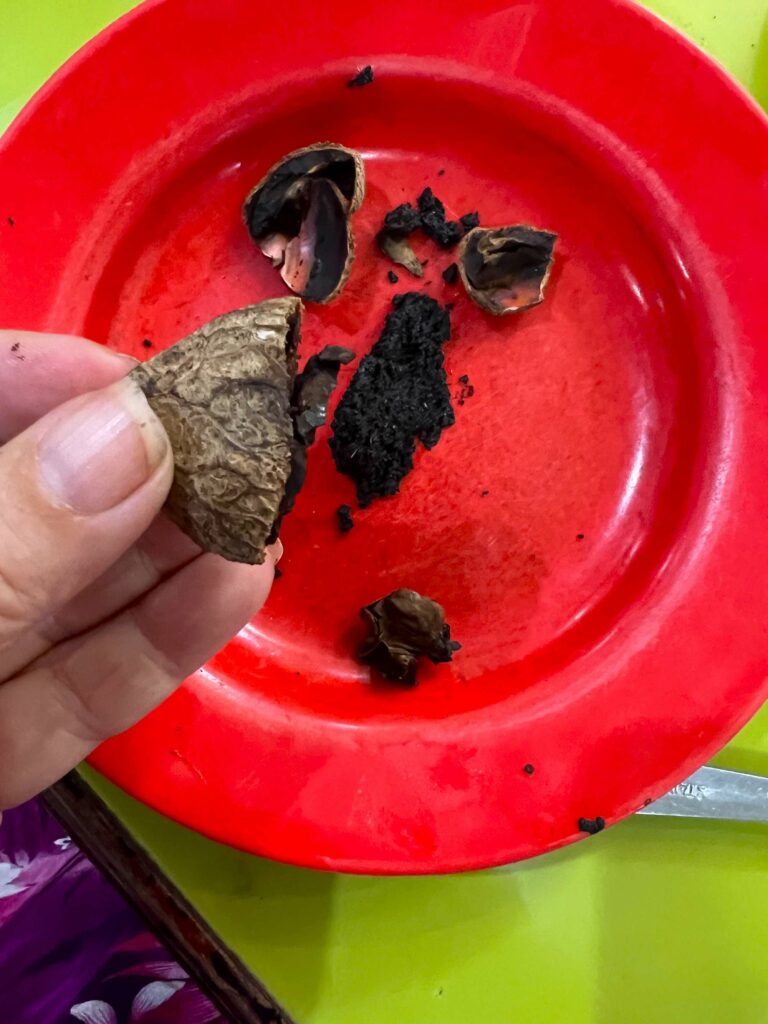
26. Keluak / Pangium Edule
Keluak or kluwek is a fruit you’ll find in Malaysia, Singapore and is an interesting Indonesian fruit used more often for its nut than the fruit flesh.
The fruit once dried is used in the popular Surabaya food rawon for both it’s dark color and slightly bitter flavor.
Elsewhere it is a bit of a suspicious fruit. Called pangi, it contains cyanide and considered poisonous unless the fruit is fermented.
The fruit’s white seeds are boiled, buried in ash, banana leaves and earth for forty days.
This releases their hydrogen cyanide and at the end of the process the now black seeds are ready to use.
The Peranakan communities (southern Chinese immigrants) in these countries consider the fermented fruit to be like a black truffle and use the paste in their cooking.
